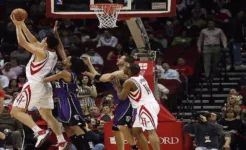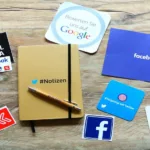NBA season tips off October 17th, and, in the digital landscape, you’ve got options of how you can watch.
NBA games are fast paced, high scoring, and fun, helping it become the fifth most popular sport in America. For cord-cutting fans who want to watch without the hefty price tag of a cable bill, watching beloved teams live doesn’t have to be expensive. And while watching legally from your own couch is more affordable than a monthly cable bill, it’s also not free.
Here are three ways you can watch the NBA games this season while still taking care of your wallet.
1. NBA League Pass
The NBA League Pass is a digital service that lets fans watch NBA games without a cable service. A subscription includes streaming on mobile devices, gaming consoles, and smart TVs. NBA League Pass costs between $119.99–$249.99 a year, depending on how many team games you want to watch.
PROS:
Subscribers can watch games anywhere while on their mobile device. They can also stream four games at once using a mosaic-view screen option. Audio broadcasts are available live, and game replays are included.
CONS:
The service is not all-encompassing. Live games for home teams are blocked. So Southern California viewers are blocked from watching live Los Angeles Lakers and LA Clippers games, while Illinois residents are blocked from watching live Chicago Bulls games. However, you can still listen to the audio of blocked games using your NBA League Pass.
2. Streaming Service
NBA games are broadcast on ABC, ESPN, NBATV, TNT, and local networks. Today, TV streaming services are available for subscribers to watch multiple channels and live TV without the contract restrictions of cable. Here’s how to stream NBA games from the major networks using a TV streaming service.
PlayStation Vue:
Starting at $34.99 a month for channel packages, PlayStation Vue is Sony’s streaming service available to the public, not just PlayStation owners. Local channel access increases that price point an extra $10 a month, depending on where you live.
PROS:
PlayStation Vue includes a superior interface with added benefits like a cloud DVR (which lets users stream from multiple devices) and viewing profiles for family members. DVR-like functions let basketball fans watch with the perks of a cable TV DVR box, using rewind, fast-forward, and pause functions on live TV. NBATV is included in the channel packages.
CONS:
At its base point, it is the priciest option of the streaming services. Also, using the PlayStation controller to navigate the Vue can be frustrating if not connected through a device like an Apple TV or an Amazon Fire TV Stick.
Sling TV:
Sling TV starts at $20 a month on channel package plans, dependent on the area where you live. It is owned by Dish Network, though you don’t need a satellite dish to use it.
PROS:
Sling TV is the cheapest option, and the most popular of streaming TV services.
CONS:
ABC is available only in select cities. NBATV is available, but it costs an additional $5 a month. The interface is limited — only one stream on one device per account.
DIRECTV NOW:
DIRECTV NOW is AT&T’s TV streaming service, and it starts at $35 a month then increases to a rate of $60.
PROS: DIRECTV NOW features the largest channel selection for the lowest price.
CONS: Users report the DIRECTV interface is sluggish.
3. Local Bars
Watching a sports game from a bar is a rite of passage for local sports fans. Experiencing the game from a bar with fans is a much more exciting environment than your couch. Chain sports bars like Dave & Buster’s and Buffalo Wild Wings broadcast NBA games, but check Yelp for a roundup of locally owned bars in your area, too.
PROS:
The atmosphere at a bar on game nights is contagious. Sports bars are filled with hometown fans ready to high-five over baskets and heckle the opposing team. Alcohol available for purchase is another major perk. Many sports bars are shedding the bad bar food stereotype, serving draft and microbrewed beers, and cooking flavorful pub food combinations.
CONS:
Bars and restaurants are actually bound by copyright law to follow certain restrictions when broadcasting a live sports game. Such establishments must mimic what the law deems a “homestyle” environment, so no admission fee is charged, no more than four TV screens are broadcasting the game, no screens larger than 55 inches are allowed, and the bar must be less than 3,750 square feet. These conditions can make the viewing experience less than ideal in crowded bars. Volume control can be another issue if you like hearing the game announcers.
You’ve still got time before the first game. Which streaming option will you pick to watch the NBA this season?








